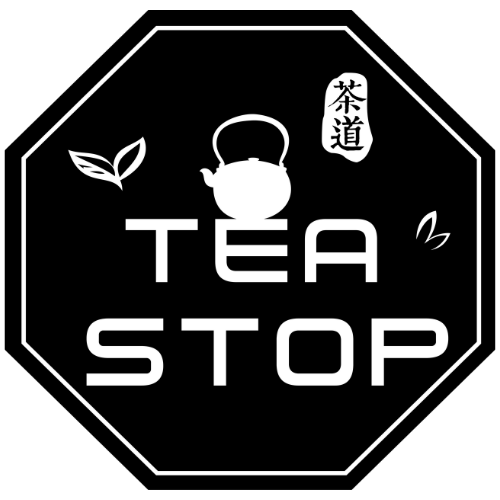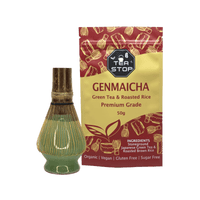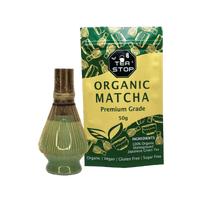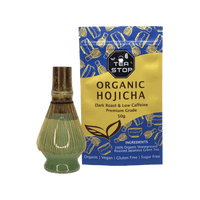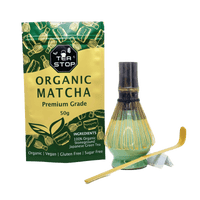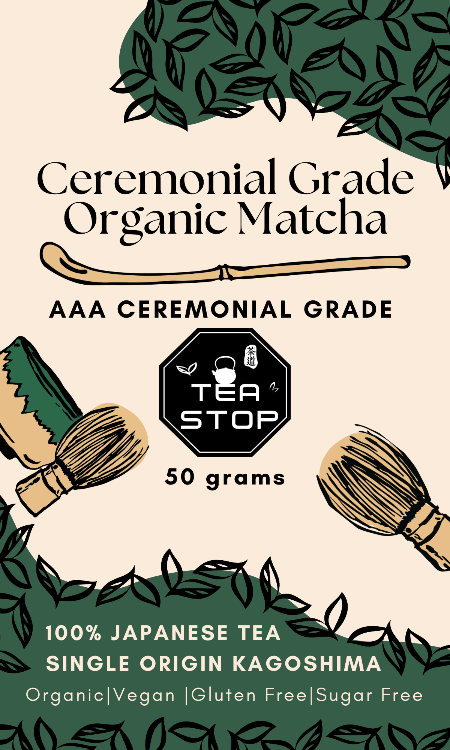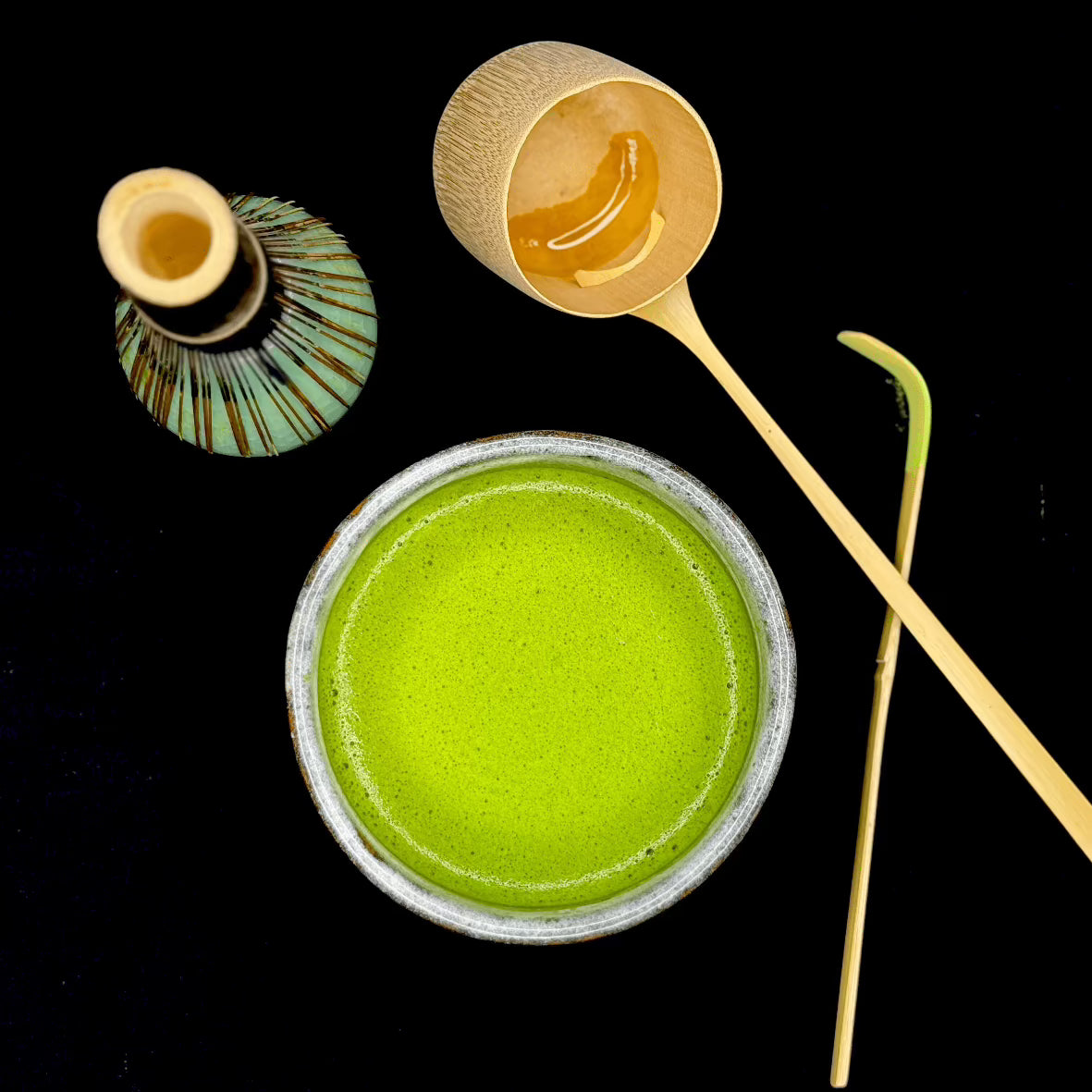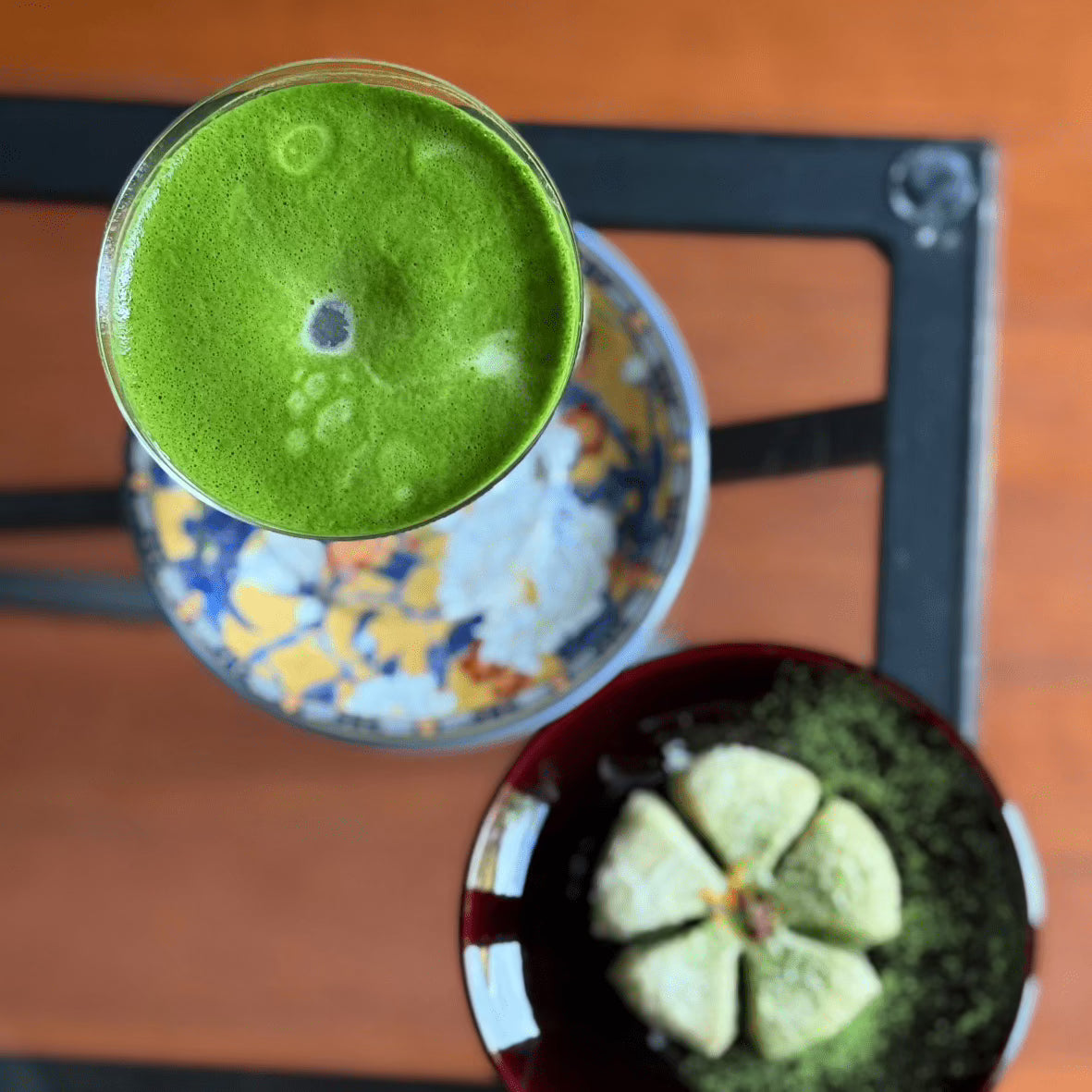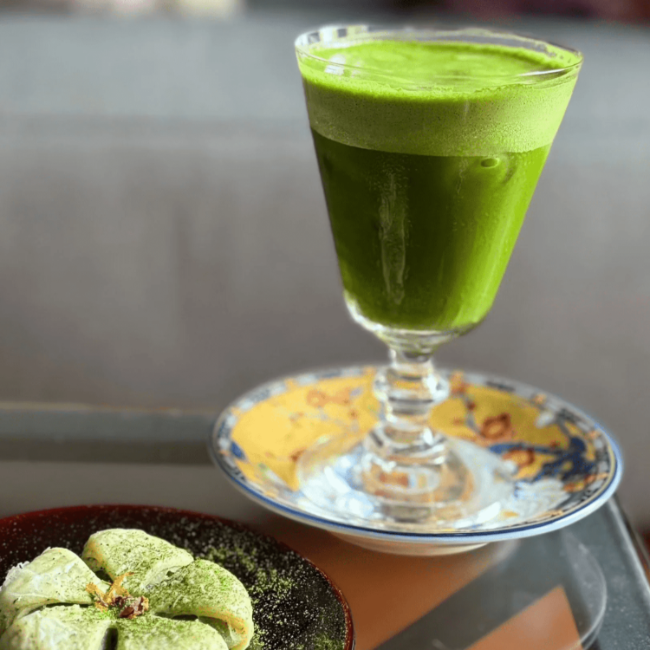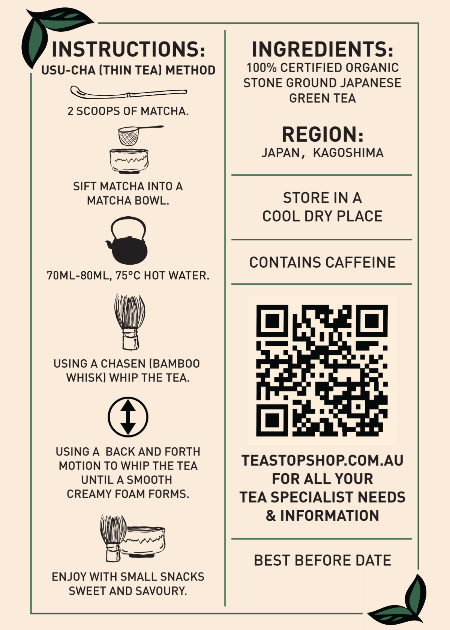
Mastering Tea Cupping: Essential Skills for Aspiring Tea Specialists
Share
Tea cupping is a method used to evaluate and appreciate tea. It is an important technique in the tea industry that helps professionals determine the quality of each cup. By analyzing the taste, smell, and appearance of tea, a tea specialist can recognize the distinct qualities that make different teas special.
Tea specialists have the important job of ensuring high standards using their trained sensory evaluation abilities. These experts pick up on subtle differences, ensuring that only the best teas reach your cup. If you want to become skilled in this craft, learning how to do tea cupping is a necessary step.
In this article, you will learn about:
- What tea cupping is and why it matters.
- The key skills that tea specialists need.
- How flavors are influenced and the cultural significance behind them.
- Training programs and advanced blending techniques used in the industry.
Let's explore the art of tea cupping together!

Understanding Tea Cupping
Tea cupping is a specialized practice that involves the careful evaluation of tea using sensory techniques to identify and appreciate its complex flavors and aromas. Unlike casual tea tasting, which might be more informal and varied, tea cupping is a structured process. It requires precision in brewing and tasting to achieve consistency across evaluations, allowing for a fair comparison of different teas.
Differences from Other Tea Tasting Methods
While traditional tea tasting can be quite subjective, cupping utilizes sensory evaluation techniques that are standardized. This allows specialists to focus on specific attributes of the tea such as aroma, taste, and appearance. These elements combine to form the flavor profile, making it easier to discern subtle differences between varieties.
Historical Context
The art of tea cupping has roots in various tea cultures around the globe:
- In China, the birthplace of tea, formalized tasting practices have been recorded for centuries.
- In Japan, the ceremonial approach to tea preparation and consumption emphasizes mindfulness and precision—principles that align with modern cupping practices.
- The British also have a long history of evaluating teas; their influence spread during the colonial period when tea became a significant commodity.
Importance of Sensory Evaluation
Sensory evaluation is crucial in determining a tea's quality and flavor profile. Evaluators use their senses—sight, smell, taste—to judge the nuances of each brew. This systematic approach ensures that only high-quality teas make it to market. It helps in identifying key flavor notes that can vary widely even within the same type of tea due to factors like region (known as terroir), processing methods, and seasonal variations.
Understanding these distinctions not only enhances appreciation but also sharpens skills necessary for those pursuing mastery in this field. Embracing these methodologies can elevate an aspiring specialist's ability to discern quality across diverse offerings.
For those interested in exploring different types of teas, a variety of options are available at Tea Stop Shop. They also offer sets for those who want to try multiple varieties at once. To fully appreciate the art of tea cupping, having the right teaware is essential. Additionally, there are various accessories available that can enhance your overall tea experience.
Essential Skills for Aspiring Tea Specialists
Becoming a tea specialist requires a deep understanding of different types of tea and the ability to evaluate them using our senses. This means knowing about black tea, green tea, oolong tea, and herbal tea inside out.
Understanding Tea Varieties
Here's a breakdown of the main types of tea:
- Black Tea: Known for its strong flavor and dark color, black tea is fully oxidized, giving it a unique taste.
- Green Tea: This type of tea undergoes minimal oxidation, preserving its natural color and resulting in a more delicate flavor with higher antioxidants.
- Oolong Tea: A semi-oxidized tea that combines characteristics of both black and green teas, offering a wide range of flavors.
- Herbal Tea: Unlike other teas, herbal teas are not made from the Camellia sinensis plant. Instead, they are infusions made from various herbs, flowers, and spices, each with its distinct flavor.
Key Sensory Evaluation Techniques
When evaluating tea, there are three main techniques to keep in mind:
- Aroma Assessment: Start by smelling the tea to get an idea of its freshness and complexity. For example, black teas might have malty or fruity scents while green teas may smell grassy or floral.
- Taste Profiling: Take a sip and pay attention to the different flavors you can detect such as sweetness or bitterness. Try to identify both prominent and subtle notes that make each type unique.
- Visual Inspection: Look closely at the dry leaves and brewed liquid to assess quality. Black tea leaves should be uniform in color and size while green teas should have bright hues.
Conducting a Proper Cupping Session
To ensure consistency during cupping (the process of tasting), follow these steps:
- Measure & Weigh: Use precise amounts of tea leaves for each sample.
- Water Temperature & Timing: Different teas require specific temperatures (e.g., 100°C for black tea) and steep times (e.g., 2 to 3 minutes) for optimal flavor extraction.
- Cupping Tools: Use standard tools like cupping sets or bowls to maintain uniformity across samples.
- Document Findings: Keep detailed notes on aroma, taste, appearance, and any differences observed during the session.
By developing these skills, aspiring specialists not only improve their ability to taste but also play an important role in upholding high standards within the industry.
Factors Influencing Flavor Profiles in Tea Cupping
Tea cupping is an art where each tea's flavor profile is carefully assessed. For anyone looking to become a tea expert, it's important to understand what affects these profiles.
Terroir Influence and Environmental Factors
Terroir, a term from the wine industry, is crucial in shaping a tea's personality. The specific mix of climate, soil type, elevation, and even local plant life gives unique flavors to the tea leaves. For example:
- High-altitude areas: These usually produce teas with more intricate flavors because the leaves grow slowly.
- Soil makeup: Nutrient-rich soils can boost certain flavor notes like earthiness or floral hints.
Weather patterns and seasonal shifts also play a role in determining the taste and smell of tea. An experienced tea expert understands these subtleties and values how nature influences each brew.
Processing Methods
The path from leaf to cup includes several processing stages that significantly impact a tea's taste:
- Withering: This step reduces moisture content and intensifies flavors.
- Oxidation: This process is vital for bringing out specific flavors, especially in black and oolong teas.
- Roasting or Firing: These techniques add richness and a toasted flavor, particularly in green and some oolong teas.
Each technique adds layers of depth, changing basic leaves into the wide variety of teas we have today.
Key Criteria in Professional Cupping
During cupping sessions, experts look at different factors to judge quality:
- Aroma: Taking deep breaths reveals subtle scents often overlooked by those not trained.
- Taste Profile: This assesses sweetness, bitterness, umami, and other taste aspects.
- Visual Inspection: Here they check leaf shape and color, which provide clues about the processing methods used.
By mastering these elements, a tea expert can identify quality and genuineness in every sip they taste.
Training Programs for Future Tea Specialists
Aspiring tea specialists seeking to refine their skills can benefit greatly from structured training programs. These programs provide a comprehensive education on tea evaluation and cupping techniques, equipping participants with both theoretical knowledge and hands-on experience.
There are numerous reputable institutions around the globe offering specialized training in tea. These programs typically feature a well-rounded training curriculum that covers:
- Tea Types and Varieties: In-depth exploration of different teas, focusing on their origins, production methods, and unique characteristics.
- Cupping Techniques: Step-by-step guidance on how to conduct professional cupping sessions, emphasizing controlled brewing techniques for consistent results.
- Sensory Evaluation: Training on the identification and description of aroma, flavor, body, and aftertaste. Participants learn how to develop a keen palate necessary for assessing quality.
- History and Culture: Understanding the cultural significance of tea in various regions enhances appreciation and insight into traditional practices.
Some noteworthy programs include:
- Tea Sommelier Certification Courses: These are offered by organizations like the International Tea Masters Association (ITMA) or the Specialty Tea Institute (STI). They focus on both foundational knowledge and advanced sensory skills.
- On-Site Workshops: Many tea estates offer immersive experiences where participants can learn directly from seasoned professionals in authentic settings.
These training opportunities not only foster an understanding of tea but also cultivate a community of passionate individuals dedicated to excellence in the industry. Engaging in these programs is a significant step towards mastering the art and science of tea cupping.

Cultural Significance and Traditional Practices in Tea Cupping
The ritualistic aspects of tea cupping are deeply intertwined with cultural traditions, particularly highlighted by practices like the Chinese tea ceremony. This ancient art form is more than just a method of preparation; it embodies respect, tranquility, and appreciation for the nuances of tea. By understanding these ceremonial roots, modern-day cupping practices can be enhanced, offering a richer sensory experience.
Mindfulness and Presence in Traditional Ceremonies
Traditional ceremonies often emphasize the importance of mindfulness and presence, elements that are crucial during a cupping session. The deliberate pace and focus on each step—from heating the water to pouring over tea leaves—allow for an immersive exploration of aroma, flavor, and texture.
Sustainability's Role in Preserving Traditions
Sustainability plays a vital role in preserving these traditions while advancing the global tea industry. Sustainable sourcing ensures that future generations can continue to enjoy high-quality teas without depleting natural resources. Emphasizing organic farming methods helps maintain biodiversity and reduce environmental impact.
Balancing Modern Innovations with Historical Wisdom
Incorporating sustainable practices alongside traditional methods not only supports ecological balance but also enhances the flavor profiles celebrated in these time-honored ceremonies. Aspiring tea specialists are encouraged to embrace both modern innovations and historical wisdom, creating a harmonious balance that respects both culture and the planet.
Mastery in Blending Teas: A Skill for Advanced Tea Specialists
For a tea specialist, mastering the art of blending is like a chef perfecting their signature dish. Blending techniques allow specialists to create unique flavor profiles that stand out in the crowded world of teas. The process involves combining different teas to achieve harmonious flavor combinations, carefully balancing each element to ensure they complement rather than overpower one another.
An Introduction to Tea Blending
Blending is much more than simply mixing different types of tea leaves. It requires an understanding of how various teas interact and influence each other’s characteristics. For instance, a robust Assam might be softened with gentle notes from a Darjeeling, or a bright Sencha could be enhanced with the subtle sweetness of jasmine blossoms. The goal is to create a blend where each component contributes to an exceptional overall experience.
Developing a Keen Palate
A keen palate is essential for identifying complementary flavors during the blending process. Here are some tips for honing this critical skill:
- Regular Practice: Regularly taste a wide range of teas and blends. Note the differences in taste, aroma, and texture.
- Sensory Training: Engage in sensory exercises such as blind tasting or aroma identification games.
- Experimentation: Don’t hesitate to experiment with unconventional pairings; innovation can lead to surprising discoveries.
By immersing oneself in these practices, aspiring tea specialists can enhance their ability to discern subtle flavor nuances and craft blends that resonate with consumers.
Incorporating these elements into your repertoire not only elevates your expertise as a tea specialist but also enriches the sensory experiences you offer through your creations.
Conclusion: The Ongoing Journey Towards Becoming a Proficient Tea Specialist
Becoming a Tea Specialist requires a commitment to continuous learning in tea specialization. Aspiring specialists need to embrace this lifelong journey and work on improving their skills in tea cupping and blending. Staying informed about future trends such as sustainable practices and innovative flavor profiles will play a significant role in shaping the profession.
As more people around the world develop an appreciation for tea, the need for knowledgeable specialists becomes even more important in providing exceptional experiences. So, keep your senses sharp, and your mind open, and let your love for tea lead you towards mastery.
FAQs (Frequently Asked Questions)
What is tea cupping and why is it significant in the tea industry?
Tea cupping is a sensory evaluation technique used to assess the quality and flavor profiles of different teas. It holds great significance in the tea industry as it helps tea specialists identify and ensure high-quality teas, guiding consumers and producers alike in their choices.
How does tea cupping differ from other tea-tasting methods?
Tea cupping involves a systematic approach to evaluating teas through controlled brewing techniques, focusing on aroma, taste, and visual inspection. Unlike casual tea tasting, cupping emphasizes a standardized method to accurately assess and compare various teas.
What essential skills should aspiring tea specialists develop?
Aspiring tea specialists should cultivate knowledge of various types of teas, enhance their aroma assessment abilities, learn taste profiling, and practice visual inspection. Conducting proper cupping sessions with controlled brewing techniques is also crucial for their development.
What factors influence the flavor profiles in tea cupping?
The flavor profiles in tea cupping are influenced by several factors including terroir, processing methods, and environmental conditions. Understanding these elements helps professionals assess the distinct flavors of different teas during cupping sessions.
Are there training programs available for future tea specialists?
Yes, there are reputable training programs that offer comprehensive education on tea evaluation and cupping techniques. These programs often provide hands-on experience to equip aspiring specialists with the necessary skills for their careers.
What cultural significance does traditional tea cupping hold?
Traditional tea cupping is deeply rooted in cultural practices such as the Chinese tea ceremony. It highlights the importance of sustainability in the global tea industry while maintaining relevance to modern-day practices through respect for tradition.
